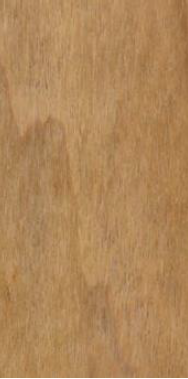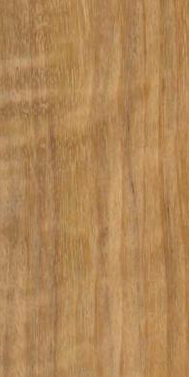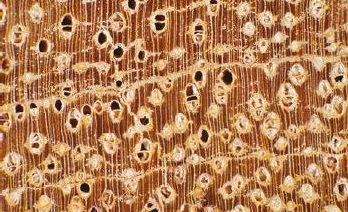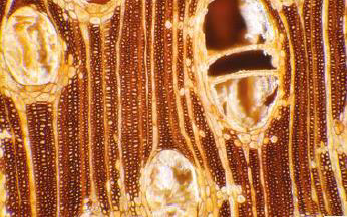Mirindiba
| Family | Combretaceae |
| Botanical Names | Buchenavia p.p. |
| Continent | Latin America |
| CITES | (Washington convention of 2017)
No trade Restrictions |
| Diameter | 50 to 90 cm |
| Thickness of Sapwood | 3 – 8 cm |
| Buoyancy | Does not float |
| Log Conservation | Moderate (treatment recommended) |
Wood Description
| Reference colour | Sapwood | Texture | Grain | Interlocked grain | Notes |
|---|---|---|---|---|---|
| Yellow brown | Clearly demarcated | Medium | Straight | Absent | Light yellow to yellow wood. Sometimes, presence of reddish veins |
Flat Sawn

Quarter Sawn

Physical and Mechanical properties
| Property | Mean Value |
|---|---|
| Density* | 0.93 |
| Monnin hardness* | 9.6 |
| Coefficient of volumetric shrinkage | 0.57 % per % |
| Total tangential shrinkage (Ts) | 9.2 % |
| Total Radial shrinkage (Rs) | 5.9 % |
| T/R anisotropy ratio | 1.6 |
| Fibre Saturation point | 23 % |
| Thermal conductivity | 0.30 W/(m.K.) |
| Lower heating value | 18,690 kJ/kg |
| Crushing strength* | 77 MPa |
| Static bending strength* | 151 MPa |
| Longitudinal modulus elasticity* | 22,380 MPa |
Natural durability & Treatability
| Resistance to decay | Class 3 – moderately durable |
| Resistance to dry wood borers | Class D – durable (sapwood demarcated, risk limited sapwood) |
| Resistance to termites | Class M – moderately durable |
| Treatability | Class – poorly treatable |
| Use class covered by natural durability | Class 3 – inside or under cover (dampness possible) |
Notes
The species Buchenavia tetraphylla (called Gindya udu in Suriname) is reported to have a higher natural durability than the other Tanimbuca species
Preservation Treatment
| Against dry wood borer attacks. | This wood does not require any preservation treatment. |
| In case of temporary humidification | This wood requires appropriate preservation treatment |
| In case of permanent humidification | Use of this wood is not recommended |
Sawing and Machining
| Blunting effect | Fairly high |
| Tooth for sawing | Stellite tipped |
| Machining tools | Tungsten carbide |
| Suitability for peeling | Not recommended or without interest |
| Suitability for slicing | Good |
| Notes | Sawdust may cause allergies |
Drying
| Drying rate | Slow |
| Risk of distortion | High risk |
| Risk of case hardening | No known specific risk |
| Risk of checking | High risk |
| Risk of collapse | No known specific risk |
| Suggested drying schedule | Schedule # 7 |
Assembling
| Nailing/ Screwing | Good but pre – boring necessary. |
| Notes | High specific gravity: important that gluing be performed in compliance with the code of practice and instructions for the glue used. |
Cross sections of Buchenavia fanshawei


Commercial Grading
Sawn timber appearance grading
According to NHLA grading rules (2015) Possible grading: FAS, Select, Common 1, Common 2, Common 3 In French Guiana, the local name of this species is "ANANGOSSI". Grading is done according to local rules "Bois guyanais classés". Possible grading: Choice 1, choice 2, choice 3, choice 4
Fire Safety
| Conventional French grading | Thickness > 14 mm: M3 (moderately inflammable)
Thickness < 14 mm: M4 (easily inflammable) |
| Euroclass grading | D-s2, d0
Default grading for solid wood that meets requirements of European standard NF EN 14081-1 (April 2016): structural graded timber in vertical uses and ceilings with minimal mean density of 0.35 and minimal thickness of 22 mm. |
Main End uses
- Arched goods
- Turned goods
- Heavy carpentary
- Ship building (planking and deck)
- Shipbuilding (ribs)
- Cabinetry (high- end furniture)
- Tool handles( resilient woods)
- Exterior joinery
- Interior joinery
- Built-in furniture or mobile item
- Moulding
- Flooring
- Industrial or heavy flooring
- Sliced veneer